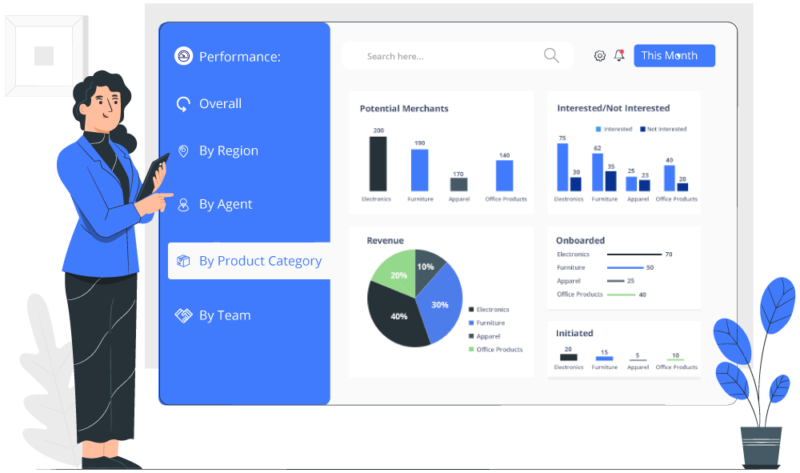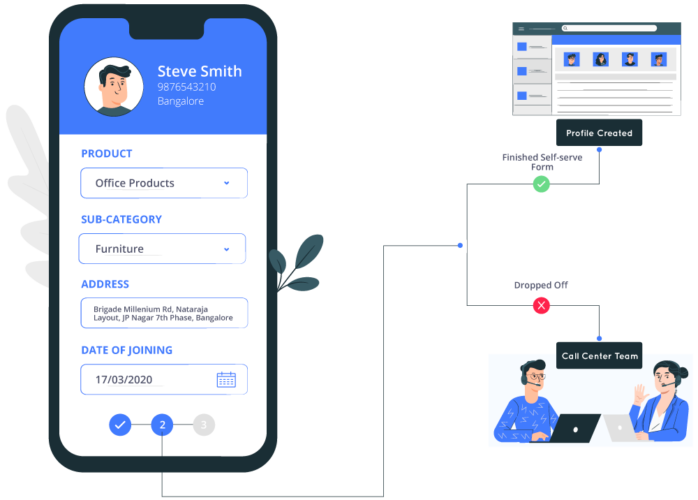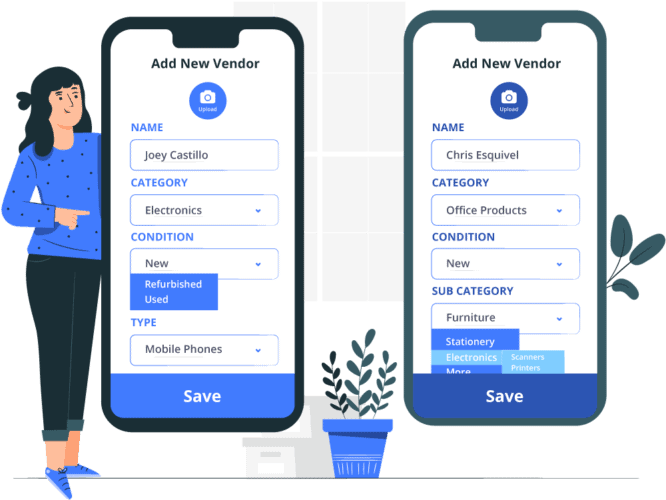Many organizations rely on manual processes for onboarding new vendors and partners.
However, manual methods become cumbersome as you scale. It can also lead to errors, double entries, and outdated data, which can obstruct communications and pose regulatory risks.
In this digital world, businesses need a faster and more reliable solution for managing trading partners and vendors.
Trading partner management solutions (TPM) centralize partner data for all internal staff. It enables partners to update their profiles via self-service portals. Thus, resulting in decreased workloads and ongoing access to consistent, accurate partner data. In short,
- Business partners can communicate easily using B2B trading partner management software.
- Organizations can use the platform to set profiles and certificates, make agreements with different partners, and store sensitive information about those partners.
- Trading Partner Management system’s Electronic Data Interchange or EDI streamlines partner document exchange.
In this article:
• Challenges in managing trading partners
• Key features of a trading partner management software
• How does TPM software help?
Why do vendors or trading partners require separate management solutions?
Businesses need to keep track of all necessary information on each trading partner.
However, managing each profile can be time-consuming—whether a firm has a small number of trading partners or numerous. Also, there can be many types of trading partners; thus, their profile information varies greatly.
Any supply chain relationship must adapt to change since it determines the future. The best way to manage new and current trading partners is with EDI trading partner management software. It can reduce the impact of issues or changes on corporate operations.
“The major challenge with vendors in tier-two cities is educating them about the company’s selling platform. If the process is not explained properly, it increases the probability of mishandling orders. Eventually, it affects their performance.”
Mr. Kumar Harshdeep, Former Vendor Manager at Flipkart
Challenges in managing trading partners
Companies face many difficulties when managing their trading partners. Some of the challenges reported frequently by our prospects are:
- Onboarding new trading partners: The onboarding process often involves lengthy formalities. While some formalities are required by the brand, many are needed for regulatory compliance and tax-related regulations.
- Handling modification requests by trading partners: Often trading partners or vendors will ask you to update or change their data. This could include payment information, taxation information, and others. Handling these on a large scale can become quite challenging.
- Communication with trading partners: This includes establishing requirements, service agreements, and timelines for introducing new partners. Furthermore, screening, troubleshooting, implementing changes, or monitoring transactions can be challenging without the proper software.
- Processing multiple documents: Trading partner management requires strong document processing and management. Using traditional or legacy software solutions can pose difficulties in document processing.
- Difficulties with B2B integration: If you are using a CRM or an ERP solution in your business, then ideally, your TPM solution should be a part of it.
“In my experience, a big challenge was performance management. It may be considered as a part of overall contract management, satisfying terms, and conditions over time. Reasons for issues include that terms and conditions should change over time if managed actively.”
Jim Goodrich, Co-founder of Continuous Process Improvement Systems
It is possible to handle the above challenges with the help of vendor onboarding software and merchant lifecycle management solutions.
Let’s discuss the features you should look for in your software to manage trading partners.
Key features of trading partner management software
Here are the key features of trading partner management software.
1. Faster onboarding
Do you spend weeks acquiring new business partners?
Without proper software solutions, managing your trading partner profiles can be challenging.
However, with a vendor or trading partner management solution, you may provide the name, kind, industry, contact information, and other details of each partner to establish their profile. You have the option to replicate, change, or look for previous partners in addition to adding new partner profiles.
Furthermore, trading partner management solutions simply onboard through e-KYC or video-KYC verification. It allows companies to upload documents digitally and approve or reject applications based on pre-defined filters.

2. Easy management of vendor profiles
You can create several profiles based on the needs of each trading partner and have granular control over each profile.
Moreover, the software will also provide you with numerous trading partner management templates. These are generally pre-filled with information for each profile. It is effortless to add, edit, and look-up up these profiles.
3. Agreement management
Agreement and onboarding processes often take a lot of time and paperwork. With an agreement management system, both parties can easily discuss terms and establish a relationship. You can manage the EDI document exchange with those partners with the help of a trading partner manager.
4. Simplified messaging
Not all business partners use or are familiar with EDI or trading partner management solutions. Trading partner management software will continue to facilitate communication between EDI and non-EDI users. With this solution, vendors and merchants who still have not digitized their operations can be onboarded easily.
5. Unified dashboard
A dashboard with a user-friendly interface helps both managers and vendors. Brands have a complete overview of their vendors’ performances and can quickly address discrepancies. Trading partners can check transactions easily and in near real-time.

6. Self-service portals
With self-serve portals, brands can increase merchant self-listing rates.
Merchants and vendors can directly approach your call center and enlist themselves. Easy onboarding also ensures that you can integrate them with your business operations without any hassles.
How does TPM software help?
Here’s how you can benefit from using dedicated trading partner management software to manage your vendors.
1. Capture partnership inquiries from several different channels
With a TPM solution, you can obtain top-tier merchants more quickly than your competition.
You can gather leads from all your merchant recruitment efforts, including digital, word-of-mouth, referrals, phone calls, emails, social media, and events.
Your team will not have to spend time on low-quality vendors or irrelevant inquiries—thanks to automated quality screening.
2. Boost the number of self-listings
You can improve the rate of merchant self-listing using dedicated TPM solutions.
You can do this while running online merchant recruitment campaigns by immediately directing drop-offs to your call center. Timely call center intervention will ensure that all merchant profiles are complete. This information can then be forwarded to the merchant onboarding team.

3. Instantly connect suitable agents with merchants
You can easily connect with your merchants and agents based on multiple factors.
For instance, you can factor in location, product category, years in business, size of operations, agent availability, expertise, experience, performance, and more. This ensures a good quality conversation and allows the merchant to respond quickly.
4. Dynamic forms for various verticals
Depending on the product categories or verticals they work with, your vendor onboarding department might be divided into multiple teams. They can complete their work more efficiently by using dynamic forms, which only show the fields required for their specific vertical. This system makes it easier for your team to onboard new vendors, lowers the possibility of human error, and expedites the application process.

5. Connect with verification teams automatically
You can direct new partners to the verification team as soon as the vendor onboarding team adds them. You can choose different criteria for assigning a vendor to a team based on agent availability, vendor category, product category, or any other criteria.
A TPM solution provides real-time integration with verification systems. The verification team can then approve or reject the vendor application immediately.
6. Monitor vendor performance in real-time
With a TPM, you can compare the different vendors’ performances and suggest corrective actions.
You can subsequently send out alert messages to vendors with performance improvement advice and inform account managers to take appropriate actions. Likewise, assign tasks automatically to account managers.
These are some evident benefits of using a trading partner management solution.
You can opt for an enterprise-level suite or look at tools that can support you with individual use cases. For example, if you wish to organize your onboarding process, you can consider LeadSquared. It helps you with onboarding automation + e-KYC verification and synchronizes online and offline operations.
If you have a team that goes door-to-door to onboard new merchants/manage suppliers, the LeadSquared mobile portal comes in handy. It allows your agent to:
- Enter partner details, collect and upload documents on the go
- Conduct field meetings easily with route guidance
Zone managers can track their field agents’ activities, meetings conducted, and more.
If you want more information on how LeadSquared can help you with onboarding automation and merchant lifecycle management, book a free consultation with our experts.









